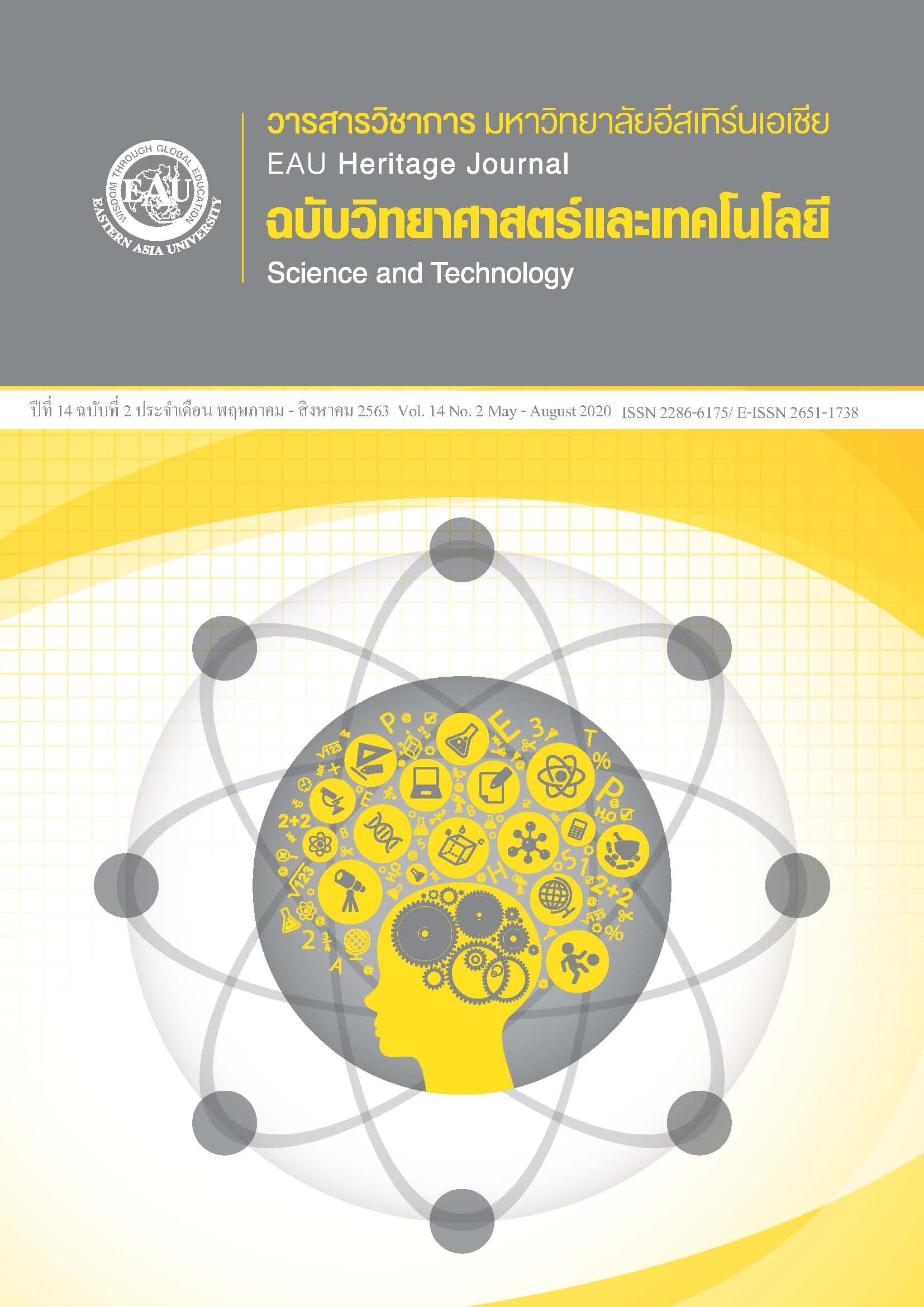บุหรี่ ผลของการประยุกต์ใช้แบบจำลองการเปลี่ยนแปลงพฤติกรรมต่อการปรับเปลี่ยนพฤติกรรมการสูบบุหรี่ ของนักเรียนชายชั้นมัธยมศึกษาตอนปลาย ในโรงเรียนแห่งหนึ่ง อำเภอด่านซ้าย จังหวัดเลย
คำสำคัญ:
บุหรี่, นักเรียนชายชั้นมัธยมศึกษาตอนปลาย, โปรแกรมการปรับเปลี่ยนพฤติกรรมการสูบบุหรี่บทคัดย่อ
การวิจัย ครั้งนี้ เป็นการวิจัยกึ่งทดลองแบบสองกลุ่มก่อนและหลังทดลอง (Two groups pretest-protest design) มีวัตถุประสงค์เพื่อศึกษาผลของการประยุกต์ใช้แบบจำลองการเปลี่ยนแปลงพฤติกรรมต่อการปรับเปลี่ยนพฤติกรรมการสูบบุหรี่ของนักเรียนชายชั้นมัธยมศึกษาตอนปลาย อำเภอด่านซ้าย จังหวัดเลย กลุ่มตัวอย่าง คือ นักเรียนชายชั้นมัธยมศึกษาตอนปลายในจังหวัดเลย จำนวน 2 โรงเรียน แบ่งออกเป็นกลุ่มทดลอง 1 โรงเรียน จำนวน 35 คน และกลุ่มควบคุม 1 โรงเรียน จำนวน 35 คน คัดเลือกกลุ่มตัวอย่างจากแต่ละโรงเรียนด้วยการเลือกแบบเจาะจง (Purposive sampling) ตามเกณฑ์คัดเข้าที่กำหนด โปรแกรมที่ผู้วิจัยสร้างขึ้น ใช้ระยะเวลา 10 สัปดาห์ ประกอบด้วย 6 กิจกรรม คือ (1) การละลายพฤติกรรม (2) รู้ทันพิษภัยจากการสูบบุหรี่ (3) เลิกบุหรี่มีประโยชน์มากกว่าที่คิด (4) วางแผนทำสัญญาเลิกบุหรี่ (5) กำลังใจสู่เป้าหมาย และ (6) การควบคุมสิ่งเร้าและจัดการผลลัพธ์สู่ความสำเร็จ เก็บรวบรวมข้อมูลโดยใช้แบบสอบถาม วิเคราะห์ข้อมูลโดยใช้สถิติ พรรณนา สถิติ Paired t-test และสถิติ Independent t-test ผลการวิจัยพบว่า ภายหลังการทดลอง กลุ่มทดลองมีคะแนนเฉลี่ยความสมดุลการตัดสินใจในการปรับเปลี่ยนพฤติกรรมการสูบบุหรี่เพิ่มขึ้นกว่าก่อนการทดลอง (p<.001) และสูงกว่ากลุ่มควบคุม (p<.001) อย่างมีนัยสำคัญทางสถิติที่ระดับ .05 คะแนนเฉลี่ยการรับรู้ความสามารถของตนเองในการปรับเปลี่ยนพฤติกรรมการสูบบุหรี่ เพิ่มขึ้นกว่าก่อนการทดลอง (p<.001) และสูงกว่ากลุ่มควบคุม (p<.001) อย่างมีนัยสำคัญทางสถิติที่ระดับ.05 และคะแนนเฉลี่ยพฤติกรรมหลีกเลี่ยงการสูบบุหรี่เพิ่มขึ้นกว่าก่อนการทดลอง (p<.001) และสูงกว่ากลุ่มควบคุม (p=.002) อย่างมีนัยสำคัญทางสถิติที่ระดับ.05 และพฤติกรรมการสูบบุหรี่ลดลงกว่าก่อนการทดลอง (p<.001) และน้อยกว่ากลุ่มควบคุม (p<.001) อย่างมีนัยสำคัญทางสถิติที่ระดับ.05 จากผลการศึกษาครั้งนี้สามารถนำไปประยุกต์ใช้เป็นแนวทางช่วยลดพฤติกรรมการสูบบุหรี่และช่วยให้เลิกสูบบุหรี่ในกลุ่มเยาวชนได้
เอกสารอ้างอิง
Ali, M. M., & Dwyer, D. S. (2009). Estimating peer effects in adolescent smoking behavior: A longitudinal analysis. Journal of Adolescent Health, 45(4), 402-408.
Boonyawan, B., Kaewpan, W., Gampakorn, S., & Sittirak, N. (2012). Effectiveness of a smoking cessation program applying the Transtheoretical model for security officer in Siriraj Hospital. Kuakarun Journal of Nursing, 19(2), 88-101. (in Thai)
Chen, X., Stanton, B., Fang, X., Li, X., Lin, D., Zhang, J., Liu, H., & Yang, H. (2006). Perceived smoking norms, socioenvironmental factors, personal attitudes and adolescent smoking in China: A mediation analysis with longitudinal data. Journal of Adolescent Health, 38(4), 359-68.
Darling, N., & Cumsille, P. (2003). Theory, measurement, and methods in the study of family influences on Adolescent Smoking. Addiction, 1(1), 21-36.
Fergusson, D. M., Horwood, L. J., Boden, J. M., & Jenkin, G. (2007). Childhood social disadvantage and smoking in Adulthood: Results of a 25-Year longitudinal study. Addiction, 102(3), 475-482.
Furberg, H., Bulik, C. M., Lerman, C., Lichtenstein, P., Pedersen, N. L., & Sullivan, P. F. (2005). Is Swedish snus associated with smoking initiation or smoking cessation?. Brief report, 14(6), 422-4.
George, D., & Mallery, P. (2003). SPSS for windows step by step: A simple guide and reference 11.0 update (4th ed). Boston: Allyn & Bacon.
Jarujit, S., Srisuriyawet, R., & Homsin, P. (2015). Factors associated with regular smoking among male vocational students in Chanthaburi Provice. Journal of Nursing and Education, 8(1), 59-71. (in Thai)
Jessor, R. (1991). Risk behavior in Adolescence: A psychosocial framework for understanding and action. Journal of Adolescent Health, 12(8), 597-605.
Jirawatkul, A. (2007). Biostatistics for health science research (3nd ed.). Khon Kaen: Nana Witthaya Press.
Juntachum, W. (2006). Mata-analysis of research results on smoking and Alcohol dringking (Doctoral dissertation). Srinakharinwirot University, Bangkok. Retrieved from http://bsris.swu.ac.th/detail_thesis.asp?id_curriculum_manage=1 (in Thai)
Namso, J. (2012). Smoking reduction programme among smokers group in Klorngkham Sub-district, Yangtalad District, Kalasin Province (Master ‘s thesis). Burapha University. Chon Buri. Retrieved from http://newtdc.thailis.or.th/docview.aspx?tdcid=286450 (in Thai)
Phetphum, C., Pongpreecha, B., Thawatchaijareonying, K., & Yangthisan, N. (2019). Cigarette access and other factor affecting youth smoking in educational institutions in Uttaradit District Municipality, Uttaradit Province. Thai Journal of Public Health, 49(3), 363-76.
Phetphum, C. (2019). Health behavior: Philosophy, theory and applications (3rd ed.). Phitsanulok: Naresuan University Publishing House.
Pitayarangsarit, S., & Pankajang, P. (2018). Summary of Tobacco control situation in Thailand 2561. Bangkok: Charoendee Munkong Printing. (in Thai)
Prochaska, J. O., Velicer, J. S., Rossi, M. G., Goldstein, B. H., Marcus, W., Rakowski, C., Fiore, L. L., Hariow, C. A., Redding, D., & Rosenbloom (1994). Stages of change and decisional balance for 12 problem behaviors. Health Psychology, 13(1), 39-46.
Prochaska, J. O. (1994). Stages and weak principles for progressing from precontemplation to action on the basis of twelve problem behaviors. Health Psychology, 13(1), 47-51.
Prochaska, J. O., Redding, C. A., & Evers, K. E. (2002). The transtheoretical model and stages of change. In K. Glanz., Rimer, B. K., & F. M. Lewis. (Eds.), Health behavior and health education (3rd ed). San Francisco: Jossey-Bass, Inc.
Polit, D., & Beck, C. (2006). The content validity index: Are you sure you know what’s being reported critique and recommendations. Research in Nursing and Health, 29(5), 489-97.
Rangklang, B. (2011). Alternative: The effectiveness of Smoking Behavior Modification program among privat 2 army, Nakhon Ratchasima province. (Master's thesis). Nakhon Ratchasima Rajabhat University, Nakhon Ratchasima. Retrieved from http://newtdc.thailis.or.th/docview.aspx?tdcid=2961 (in Thai)
Raya, P., Benjakul, S., Kengkarnpanich, K., Kengkarnpanich, T., & Sattanan, K. (2015). Effacts of the Smoking Cessation program applying transtheoretical model among smokers at Wongwon Sub-District, Kuntung District Tung Provice. Journal of Boromarajonani College of Nursing Bangkok, 31(2), 99-25. (in Thai)
Sakornpanich, C. (2011). Factors associated with non-smoking High School Male student’s intention to smoke. The Journal of Prapokklao Hospital Clinical Medical Education Center, 28(1), 44-52. (in Thai)
Saardaiem, V., Pumprawai A., & Rongmuang, D. (2016). The effects of the Modifying Smoking Behavior program of working men in Chaiya District, Suratthani Provice. Journal of Graduate Research, 7(1), 85-100. (in Thai)
Sripituk, S., Muangchang, Y., Sanongyard, J., Siratirakul, L., & Yuenyong, S. (2012). Effective of Protect Smoking program of Junior High school, Suphanburi Provice. Journal of Phrapokklao Nursing College Chanthaburi, 23(1) 38-52. (in Thai)
Vathesatogkit, P. (2007). Facts about Thai youth and smoking. Bangkok: Action on Smoking and Health Foundation Thailand. (in Thai)
Vathesatogkit, P. (2016). Collaborate of Southern media to protect children from smoking.
Retrieved from http://www.ashthailand.or.th/th/news_page.php?id=881 (in Thai)
Velicer, W. F. Prochaska, J. O., Fava, J. L., Norman, G. J., & Redding, C. A. (1998). Smoking cessation
and stress management: Applications of the transtheoretical model of behavior change.
Homeostasis, 38(5-6), 216-233.
Weiss, J. W., Garbanati, J. A., Tanjasiri, S. P., Xie, B., & Palmer, P. H., (2006). Effects of family functioning
and self-image on Adolescent smoking initiation among Asian-American subgroups.
Journal of Adolescent Health, 39(2), 221-228.
World Health Organization. (2013). WHO report on the Global Tobacco epidemic 2013.
Retrieved from https://apps.who.int/iris/bitstream/handle/10665/85380/9789241505871_
eng.pdf?sequence=1







